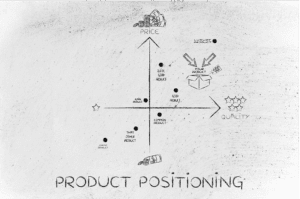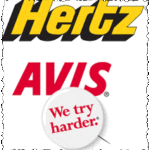To Set Your Heading, Get Your Position

Marketers talk a lot about positioning. Usually, these conversations focus on positioning as an action or activity – something you do a product. Such as, “Let’s position our new X-7 Gamechanger as the best widget on the market.”
The problem with this line of thinking is that it’s based on a misperception that positioning is something you do to a product. But companies don’t position products, people do. Positioning is what that the market (in aggregate) does to a product.
Unless it’s a brand new product in a brand new category, any new product entering an existing marketplace is going to launch with a position based on associations, attributes and benefits in context with perceived competitors in the category. Many marketers believe that just because they claim a position, benefit or unique advantage for their product at launch or introduction that consumers will buy it – literally. Both the product claim, and the product.

But this rarely happens. A classic marketing case study illustrating this is the Hertz and Avis rent a car positioning battle that went on when Avis launched an advertising campaign claiming to be the leader in the market. At that time, Hertz was the perceived category leader (its position), with a significant market share and mind share to back it up.
Avis marketing managers wrongly believed that simply making the claim that Avis was number one would magically transform their brand position to number one also. This fatal marketing flaw could have cost the company years of sweat equity built from effective marketing, but adept marketing managers at Avis quickly realized the mistake and adjusted to it.
What did they do? They agreed with the reality – the marketplace perception – that Hertz was the leader in the category in terms of mind share and market share. A gutsy move for sure. So together with the agency, Avis came up with a campaign and related tagline that goes down in history as one of the most successful position campaigns in modern advertising.
Avis took the position of, “We’re number two. We try harder.” Suddenly, the marketplace found a positioning tagline they could agree with. And act on. The proposition that Avis recognized it was behind the market leader, but had aspirations to become the leader, resonated with the market.
“We Try Harder” conveyed a sense of higher expectations of the Avis brand from a customer’s perspective. And the results were successful. Avis gained significant market share during the course of the campaign. And ultimately Hertz slipped (remember O.J. Simpson as its spokesperson?) and Avis moved past Hertz.
One additional point is important to note. A strong positioning statement is one thing, but if the customer’s experience does not resonate with the brand promise claim inherent in that positioning statement, the positioning strategy could end up earning the company more than helping.
For example, if customers’ perception was that Avis wasn’t “trying harder” to become the leader, then the positioning strategy could end up significantly hampering sales rather than helping. This is a key reason why sales and marketing always need to be in communication and agreement with one another on product positioning and to-market strategy. Sales must be in the loop on what marketing is promising, and be up to delivering on that promise.
So remember: companies don’t position products people do. Keeping this principle in mind when you’re launching or looking to re-position a product can save you a lot frustration and re-tooling of campaigns that are not resonating or working.
If you’d like to discuss positioning for your brand or product, please send me an email.

Bill Threlkeld is president of Threlkeld Communications, a content marketing and public relations agency based in Santa Monica, California. Threlkeld Communications specializes in integrated editorial ecosystem campaigns that utilize PR, Social Media, Blogs, Audio, Video and Email Marketing.
